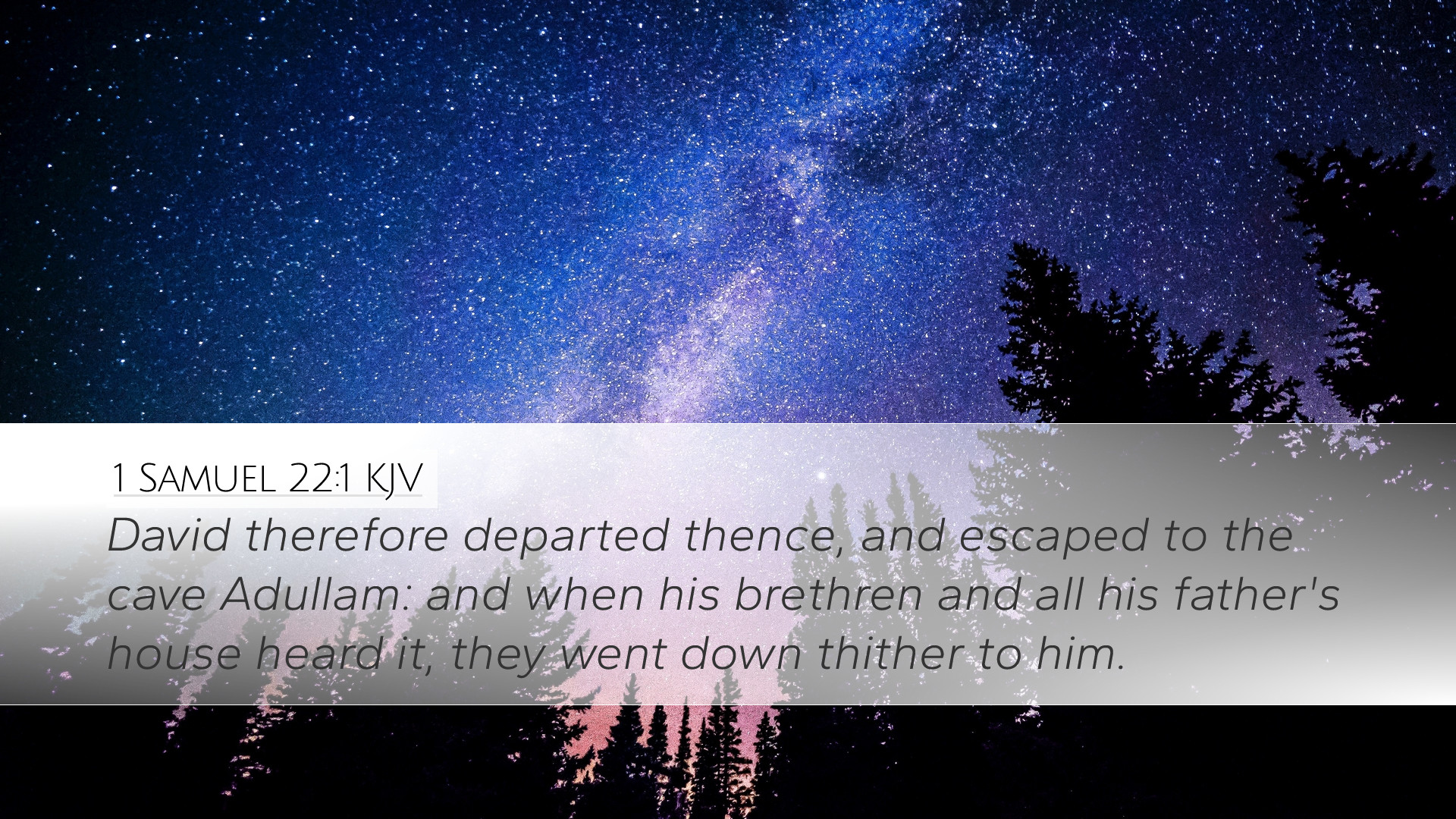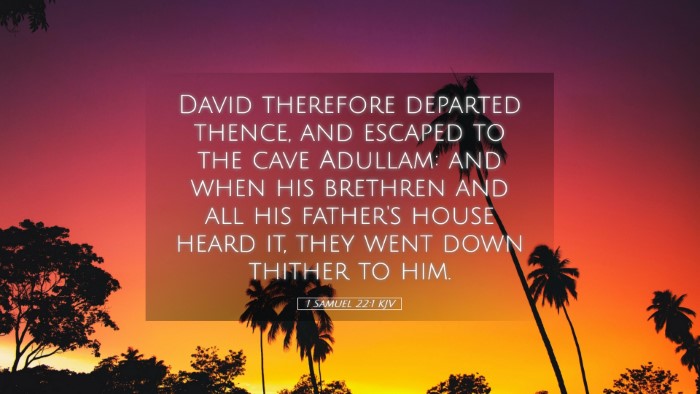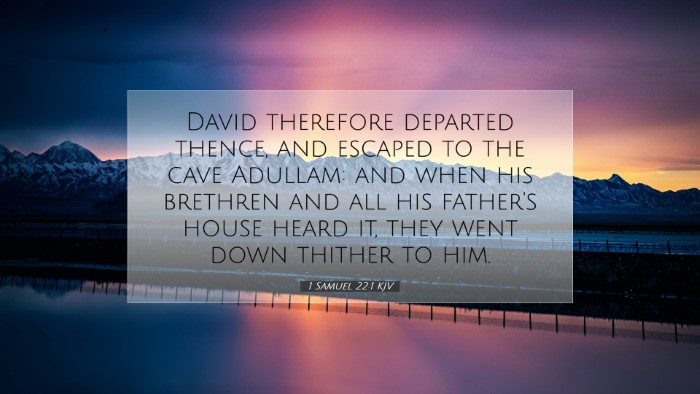Commentary on 1 Samuel 22:1
Verse Context: 1 Samuel 22:1 states, “David therefore departed thence, and escaped to the cave Adullam: and when his brethren and all his father’s house heard it, they went down thither to him.” This verse marks a significant transition in the life of David as he flees from King Saul and begins to gather a following.
General Overview
This verse indicates a pivotal moment in David's journey, highlighting both his trials and the providence of God in preparing David for kingship. The cave Adullam becomes a sanctuary not just for David, but for others who were troubled and in distress. The emotional and spiritual implications of this gathering are profound, as they reflect God's mercy and the formation of a community around David, which would play a crucial role in his future.
Insights from Matthew Henry
Henry emphasizes the significance of David’s departure. He notes that David's escape to the cave symbolizes his separation from worldly power, as he becomes a fugitive. This act is not rooted in cowardice, but in faithfulness to God’s calling. David's flight to the cave is a reflection of his reliance on God during adversity.
- Henry draws parallels between David's circumstances and the trials faced by believers, suggesting that when times are tough, a retreat into a "cave" (a place of refuge) can be necessary to uphold faith.
- The cave Adullam becomes a metaphor for spiritual refuge, where one can contemplate God's faithfulness and strength amidst human weakness.
Thoughts from Albert Barnes
Barnes elaborates on the geographical and theological implications of David's retreat. He notes that the cave Adullam is located in a region that had a history as a stronghold and was known for its natural defenses. This setting is indicative of God's providence—providing a refuge for David at a critical moment.
- Barnes highlights that the gathering of David's relatives and others reflects the spiritual leadership David would later assume. It demonstrates the sense of loyalty and kinship that can emerge in times of crisis.
- There is also insight regarding the nature of leadership; true leaders often arise from situations of adversity and are forged in the fire of struggle, much like David at this moment.
Insights from Adam Clarke
Clarke provides a detailed analysis of the social dynamics at play when David fled to the cave. He suggests that those who came to David were not merely his family, but also people who felt oppressed, indebted, or discontented—echoing the call to those who struggle against tyranny.
- Clarke interprets this as indicative of God's provision for David, assembling a group of marginalized individuals who would later become his mighty men, emphasizing the principle that God often uses the downtrodden to fulfill His purposes.
- He also points to the importance of community in the life of a leader, showing how David emerged from a precarious position with loyal supporters, highlighting the relational aspect of pastoral leadership.
Theological Considerations
The overarching theological themes in this verse speak to the notions of divine providence, leadership, and community. David's experience sets a precedent for pastors and leadership today, portraying a model of reliance on God and the significance of gathering others around a shared vision amidst adversity.
- Providence: This moment exemplifies God’s sovereign hand in orchestrating events for David’s future. It is a reminder that even in distressing circumstances, God has a plan.
- Leadership: David's ability to draw people to himself, despite his vulnerable position, illustrates the qualities of effective leadership that must include empathy, humility, and strength guided by faith.
- Community: The gathering at the cave serves as a precursor to David’s future reign, highlighting that true community is often formed in times of hardship.
Conclusion
1 Samuel 22:1 offers rich insights into the life of David, his relationship with God, and the importance of community in times of struggle. The layers of meaning within this single verse remind us that God often prepares His servants through trials and that real leadership is forged in adversity.
Pastors, students, and scholars can find profound lessons in this narrative, particularly concerning their own journeys and the communities they lead. David's faith in retreating to the cave becomes a model of spiritual resilience, providing both a refuge and a rallying point for those weary in the fight.


